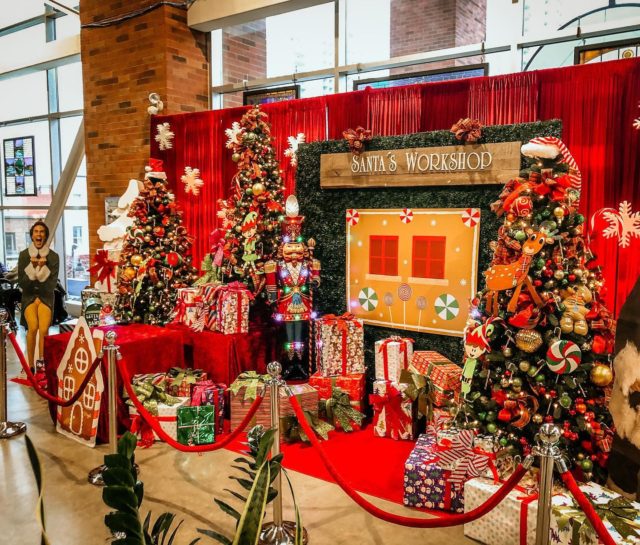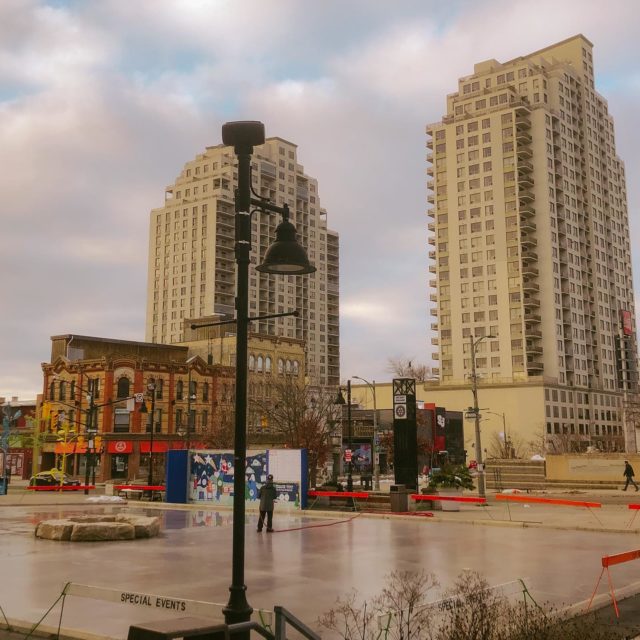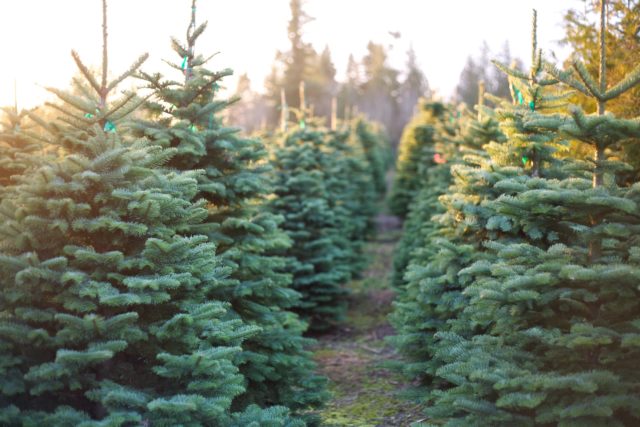Real Christmas Trees and our Tree Traditions
December 10, 2020
December 10, 2020


Santa’s Workshop is NOW OPEN! From Thursday, December 10 until Thursday, December 24, come see the Christmas sparkle come alive with an enchanting visual display of Santa’s Workshop right here at the Market!
All the Christmas Magic involves:
Santa’s Workshop will be located upstairs on our Mezzanine!

Our skating rink is slowly coming along! Check out this great photo of the finishing touches being applied! We’re expecting warm weather and rain in the next few days, so stay tuned for when the rink will be open!

As I set up my tree this year, I wondered about our Christmas tree traditions. Where did these traditions come from? Does cutting trees every December impact our environment? What’s it like being a Christmas tree farmer?
Whether or not your holiday traditions include a tree, we found some information that you still might find interesting!
While different peoples across the globe have been using various greens for centuries for a host of reasons – as décor, to keep away evil spirits, as symbols, etc. – it is generally said that the first Christmas tree as we now know it was used about 400 years ago in Germany and was introduced to Canada in 1781 in Quebec by a German immigrant, Baron Freiedrich von Riedesel (you can read more about his family’s story here). While Canadian tree traditions have been adopted from many places and customs, they are generally seen in Canada as a symbol of renewed life and a sense of hope.
But what impact do these traditions have on our environment? Is it negative, could it be positive? The Christmas Tree Farmers of Ontario explain that nearly all real Christmas trees are grown as a crop on tree farms. This means that almost no Christmas trees are cut in the wild, and our forests are not being affected by Christmas tree traditions. This claim is supported by Bert Cregg, an expert from Michigan State University in Christmas tree production and forestry. On these farms, trees are usually only harvested after 10 years and to ensure future harvests, for every tree cut down, about 10 need to be planted. This ensures that about 90% of the farm is always full of trees.
Most of us probably know the benefit of trees of any kind growing anywhere. Trees remove CO2 from the air and create oxygen for us to breathe. They also act as natural air pollution filters. About one acre of a tree farm (or any area densely populated by trees) can remove up to 13 tonnes of airborne pollutants EVERY YEAR. How fantastic is our earth?
Tree farms are also havens for a wide variety of mammal and bird species such as sparrows, chickadees, foxes, coyotes, squirrels, grosbeaks, etc.
What about the disposal of those trees? Well, CTFO explains that most municipalities, London included, collect trees and other greenery décor at the end of the holiday season. We also have various locations (the EnviroDepots) where we can drop them off. The trees are, of course, biodegradable, and will break down naturally and return nutrients to the soil.
Whether you choose a real tree or an artificial one, it’s always interesting to know what’s happening behind the scenes! And most importantly, no matter how you celebrate or what you celebrate, I hope that your traditions help you enjoy the season with as much peace and hope that this time of year can bring.

This is the list, folks! See who you can find at the Farmers’ Market this Saturday, December 12th – the second last farmers’ market of 2020! Click on their names to find information on pre-orders and to learn more about their farms and businesses!
Produce:
Meats/Dairy:
Baked Goods:
Other:
Check out their websites for more information about their products and to see what’s in season/currently available!
Mark’s Fine Meats will have their sliders available Indoors, and we’ll have complimentary tea from Tea Haus available Outdoors at 10am.